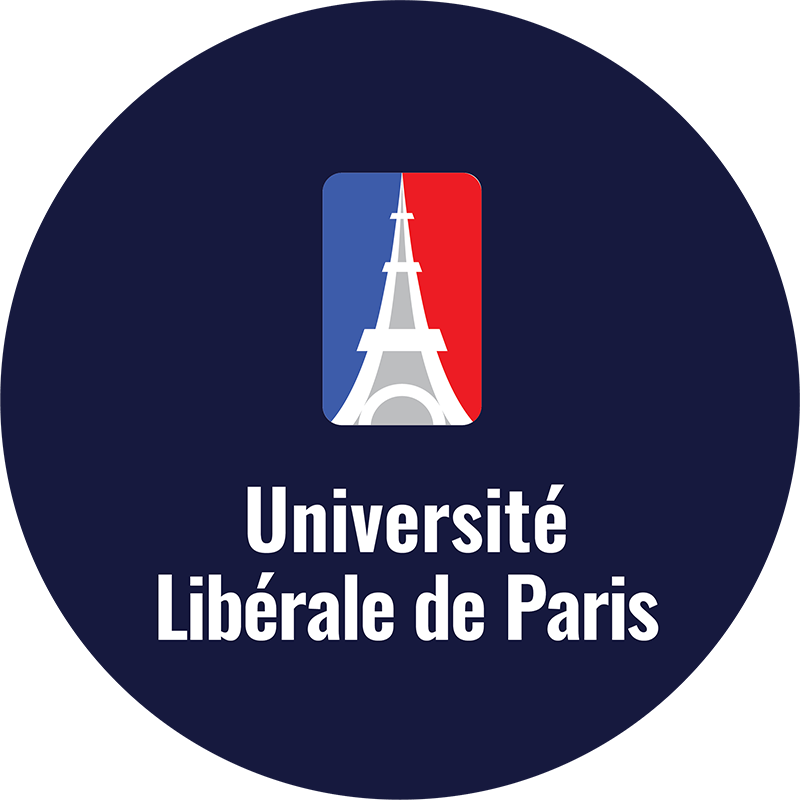
Micro Master’s Degree in Strategic Management
Micro Master's Degree in Strategic Management
Level 7 is equivalent to Master's leveL
This unit aims to develop learners’ understanding of strategic and change management models and the ability to review strategic plans, propose strategic options, create implementation plans, and lead organizational changes.
Level 7 is equivalent to Master’s level and could transfer 20 credits and total tuition fees to Master programs of Paris-U.
Programs in details
Learning Outcomes:
1. Be able to analyze critical external influences on an organization’s strategy.
1.1 Critically evaluate the position of an organization in its current market.
1.2 Critically analyze the effects of existing plans on an organization.
2. Be able to appraise strategic options for an organization
2.1 Critically explore the relationship between corporate, business, and operational strategies.
2.2 Apply strategic models and tools to develop strategic options for an organization.
2.3 Evaluate strategic options for an organisatioorganizationn.
3. Be able to evaluate various tools and approaches to a strategy implementation plan.
3.1 Create a relevant vision, mission, and strategic goals for an organization.
3.2 Propose a suitable structure for an organization that fits a strategic plan.
3.3 Create a resourced strategy implementation plan.
4. Be able to develop and implement a strategic organizational change management plan.
4.1 Apply force field analysis to distinguish forces of change effectively.
4.2 Critically evaluate various change management models.
4.3 Identify relevant leadership and change agent skills to implement a strategic change in an organization.
5. Be able to monitor and control the implementation of strategic plans.
5.1 Develop a monitoring and control system for the implementation of strategic plans.
5.2 Design key success indicators to monitor the strategic plan’s implementation.
5.3 Distinguish potential risks during implementation.
5.4 Review the effectiveness of the strategic plan.
Topics:
Explaining the importance of scanning business environments in making strategic organizational decisions.
Business environment, e.g., definition, features, characteristics, types; distinctions between culture and organizational environment; critical components of the organizational environment; corporate environment basics; internal environment, e.g., working capacities, employment relations, job satisfaction; external factors, e.g., beneficiaries identification, consumer group demands; ways to meet those demands; contractors; stakeholders; shareholders; suppliers; general workforce; competitor success directions; links of influential factors, e.g., social, political, technological; organizational commitment, e.g., short term, medium and long term; competitor analysis; designing of products or services; influence measurement; corporate environment improvement.
Using a variety of tools to analyze the external business environment critically:
Course Coverage:
Business environment dynamics, e.g., definition, characteristics, changes; basics of business environment; organizational environment, e.g., benchmark, liability, elasticity, intelligibility, commitment of the team, management practices impact; effectiveness and efficiency effects; tools of analysis; threats and opportunities analysis; SWOT (strengths, weaknesses, opportunities, threats) analysis; market analysis, consumer survey; competitor identification; market research; data and information analysis.
Using a variety of tools to analyze the internal business environment critically:
Course Coverage:
Internal organizational environment, e.g., definition, types, features, and changes; internal management analysis; employee and management review; efficient communication rationale; strength analysis; weaknesses analysis; resource analysis; pricing strategies; strategic drift; product analysis; product life cycle analysis.
To review the position of an organization in its current market:
Market situation analysis; organizational position measurement; strategic business planning tools; e.g., SWOT (strength, weakness, opportunity, and threats) analysis; Porter’s Five Forces Analysis; value chain analysis; Boston growth-share (BCG) matrix; market equilibrium; market share; sustainable competitive advantage.
To analyze the effects of existing plans on the organization:
Organizational planning effects; organizational agreement between several organizations; communication with stakeholders; organizational planning development; objectives led management; guidelines; action planning; strategic and structure fit; Business Process Re-engineering; performance appraisal; policy development; systems of communication; realignment and focus.
Identify and analyze mandatory competency and competitive advances of an organization:
Competitive advantage identification; economies of scope and scale; product or service life measurement; internal statistics and surveys; measures for monitoring and evaluating; emergent and unrealized strategy; globalization effects; resources analysis; mandatory skills and competencies; experience curves; comparative analysis.
Discussing the relationship between corporate, business, and operational strategies:
Strategic relationships, e.g.,., concepts, application, and changing trends; corporate strategies; business strategies; operational processes; effective communication; strategy formulation; strategic drift; strategic options review; benchmarking; competitor analysis; benefit-cost analysis; information review; organization value consistency; position in markets; market share; globalization effect; impacts of technological advancements.
Use various models and tools to develop strategic options for an organization:
Strategic models, e.g., Identification, uses, and effectiveness; Mintzberg’s strategies, e.g., emergent and deliberate; Ansoff matrix strategies; balanced mandatory card analysis; sensitivity analysis; organizational integration; merger and acquisition; gap analysis; product portfolio.
Analyse and decide strategic and business strategic options:
Strategic options, e.g., basics and organization-led applications; potential option review; business ethics; good practices; effective participation of stakeholders; diversity management; organizational environment consideration; awareness raising; objectives settings; strategic alliance; benchmarking; leadership.
Developing appropriate vision, mission, and strategic goals for an organization:
Situational analysis; setting vision and mission targets; understanding organizational values; business environment outlining; conceptualizing stakeholders.
Proposing a suitable structure: stakeholders:
Identification, role analysis, comprehensive target setting for a business organization, motivation to participate in strategic planning, strategy formulation, strategy implementation, monitoring, and evaluation of stakeholders’ performance.
Developing an agreed strategy plan that addresses all resource implications due to the new action plan:
Organizational culture analysis; understanding fundamental values of a business organization, e.g., cultural, ethical, social, economic, business; SMART (specific, measurable, achievable, realistic, time-based) target selection; resource audit; risk analysis.
Carrying out force field analysis:
Organizational changes, e.g., definitions, processes, patterns; the identification of change forces; roles of change forces; factor identification; the impact of globalization.
Using various change management models:
Change management models, e.g., identification, selection, and use, to implement any organizational change; Lewin’s Change Management Model; McKinsey 7-S Model; Kotter’s 8-Step Change Model.
Acquiring leadership and change agent skills:
Change agent skills e, e.g., identification, appropriate selection,d application, implementing a strategic change in an organization, the right attitude, relevant knowledge, leadership, and abilities.
To develop a schedule for the implementation of the plans:
Time requirement for planning implementation; time allocation for planning; time management; time scheduling; planning implementation timetable.
To develop key success factors to monitor the implementation of the strategic plan:
Success factors definition; success factors identification; successful strategic plan monitoring; planning implementation; control system evaluation and monitoring; cascading and dissemination process.
To analyze potential risk:
Risks, e.g., definitions, features, identification, and relevancies in diverse circumstances; implementation risks; implementation risks avoidance; contingency planning; contingency corrective development; risk preventive actions.
Indicative reading list
Core texts:
- Johnson, G. and Scholes, K. (2017) Fundamentals of Strategy. Pearson Ltd.
- Gupta, S. and Starr, M. (2014) Productions and Operations Management Systems. Boca Raton, FL: CRC Press.
Additional reading:
- Barney, J. (2010) Gaining and Sustaining Competitive Advantage. New York: Pearson Education.
- Cusumano, M. A. and Markides, C. (2001) Strategic Thinking for the Next Economy. Mason, OH: Cengage Learning EMEA.
- De Wit, B. and Meyer, R. (2004). Strategy: Process, Content, Context. Stamford, CT: Cengage Learning EMEA.
- Finlay, P. N. (2000). Strategic Management: An Introduction to Business and Corporate Strategy. Harlow: Prentice Hall.
- Goold, M., Campbell, A. and Alexander, M. (1994) Corporate-level Strategy: Creating Value in the Multibusiness Company. New York: John Wiley and Sons Ltd.
- Grant, R. (2010) Contemporary Strategy Analysis. Hampshire: John Wiley and Sons.
- Gratton, L. (2000) Living Strategy: Putting People at the Heart of Corporate Purpose. Harlow: Financial Times/Prentice Hall.
- Harrison, J. S. (2002) Strategic Management of Resources and Relationships: Concepts and Cases. Hampshire: John Wiley and Sons.
- Hill, C., Jones, G. and Schilling, M. (2013) Strategic Management: Theory: An Integrated Approach. Stamford, CT: Cengage Learning.
- Johnson, G., Scholes, K. and Whittington, R. (2008) Exploring Corporate Strategy. Harlow: Financial Times/Prentice Hall.
- Johnson, G. & Scholes, K. (2000) Exploring Public Sector Strategy. Harlow: Financial Times/Prentice Hall.
- Kaplan, R. & Norton, D. (2000) The Strategy-focused Organization: How Balanced Mandatory Card Companies Thrive in the New Business Environment. Massachusetts: Harvard Business School Press.
- Lynch, R. (2005) Corporate Strategy. Harlow: Financial Times/Prentice Hall.
- McGee, J., Thomas, H. and Wilson, D. (2005) Strategy: Analysis and Practice. New York: McGraw-Hill Higher Education.
- Mintzberg, H. (2000) The Rise and Fall of Strategic Planning. Harlow: Financial Times/Prentice Hall.
- Mintzberg, H., Ahlstrand, B. and Lampel, J. (2008). Strategy Safari: Your Complete Guide Through the Wilds of Strategic Management. Harlow: Financial Times/Prentice Hall.
- Pettigrew, A. M., Thomas, H. and Whittington, R. (eds.) (2006) The Handbook of Strategy and Management. London: Sage.
- Stacey, R. D. (2010) Strategic Management and Organisational Dynamics. Harlow: Financial Times/Prentice Hall.
Journals/newspapers:
- The Journal of Marketing
- The European Journal of Marketing;
- The Journal of Marketing Management;
- • Academy of Management Journal;
- British Journal of Management;
- California Management Review;
- European Management Journal;
- Harvard Business Review;
- Journal of Business Strategy;
- Journal of Management Studies;
- Long Range Planning;
- MIT Sloan Management Review;
- Strategic Change;
- Strategy and Leadership;
Websites:
- www.sps.org.uk Strategic Planning Society;
- www.ft.com Financial Times;
- www.managers.org.uk Chartered Management Institute
Entry requirements
To enroll in the Micro Master program, the learner must possess:
- Graduated with a Bachelor’s degree from an accredited university or achieved a Level 6 Diploma according to the European Qualifications
- For a non-global accredited university degree, The learner should have followed the Accreditation of Prior Experimental Learning for Qualification (APELQ) policy of Université Libérale de Paris (Paris-U).
- Learners must be over 21 years old.
Université Libérale de Paris reserves the highest decision-making power for admission whether to accept or not accept after a specific review of each candidate’s profile to ensure they can comprehend and gain benefits when participating. For the fake university or diploma mills, SIMI shall not be accepted.
English language requirements
Proof of English language proficiency must be provided if a learner is not from a predominantly English-speaking country.
- Common European Framework of Reference (CEFR) level B2 or equivalent
- Or A minimum TOEFL score of 101 or IELTS 6.5; Reading and Writing must be at 6.5 or equivalent
After graduating from Micro Master programs, students receive all certified documents from Université Libérale de Paris.
Certified Documents:
- e-Certificate from Université Libérale de Paris.
- Hard copy certificate from Université Libérale de Paris
- Accreditation of Prior Experiential Learning for Qualification (APELQ) certified from Paris-U for credit and tuition fee transfer
- Certification & Recognition certified from Paris-U
Because the program is accredited and recognized, students can easily use permitted in the working environment and have many opportunities for career advancement. In addition, if you want to study for a university degree, students can convert all credits and the full tuition fee when participating in the program Paris-U.
Université Libérale de Paris’s Micro Master Degree means:
Paris-U Micro Master Degree is certified at the master level and is equivalent to:
- Level 7 Certificate of Regulated Qualification Framework (RQF) of the UK
- Level 10 certificate of Scottish Credit and Qualifications Framework (SCQF)
- Level 7 Certificate of Credit and Qualifications Framework (CQFW)
- Level 7 certificate of European Qualifications Framework (EQF)
- Level 9 certificates of the Australian Qualifications Framework (AQF)
- Level 7 certificate of ASEAN Qualifications Reference Framework (AQRF)
- Level 9 certificate of the African Continental Qualifications Framework (ACQF)
Students can convert all credits and the full tuition fee when participating in the Paris-U academic programs if they want to study for an academic degree.
Credits transfer:
Learners can accumulate 20 credits from the Micro Master program when participating in the Master of Arts in Education Management and Innovation Pedagogy (MAEMIP) of Paris-U. Please see the credit transfer policy HERE
Tuition fee transfer:
When participating in the MAEMIP program, students who have graduated from the Micro Master program will receive a discount equivalent with short courses tuition fee for each certified. Please see the tuition fee transfer HERE
[APEL.Q] – Accreditation of Prior Experiential Learning (APEL) for Award of Academic Qualifications (Q) is the award of academic qualifications to individual learners through the evaluation and assessment of prior experiential learning towards fully accredited programs offered by Paris-U. A degree with [APEL.Q] pathway is granted based on the knowledge, skills, and competencies acquired through formal, informal, or non-formal learning.
As a crucial component of Liberal Education, Paris-U is the first university in the world to fully implement the APEL.Q approach to acknowledge pat experience and knowledge. Assist students in becoming rapidly recognized and entering the labor market.
Short Courses Certified programs are wholly approved and recognized according to the same rigorous standards as academic degree programs. Learners might include this qualification in their portfolios when submitting for the APEL.Q examination.
Please note that the APEL.Q process will lead to only the MLSCM degree from Paris-U, not a dual degree. For more information, read more HERE
Université Libérale de Paris (Paris-U) Certified program is not-for-profit, so Paris-U’s partners fully support the tuition fees. Université Libérale de Paris reserves the right not to accept more students if the number exceeds the quotas.
Apply Policy:
- To participate in Paris-U’s Short courses program, students must meet the entry criteria corresponding to each level. Please see the “Entry” tab for more details.
- Paris-U will only accept applicants if their entry qualifications are from diploma mill universities or schools/universities that are accredited.
- For Level 7 short courses programs, if an entry bachelor is unavailable, students must demonstrate at least five years of work experience in the relevant field. Please note that a bachelor’s degree is required for the Master’s program at Paris-U, so you could take the Micro Master’s program but could not move to the Master’s program at Paris-U.
- English is not a mandatory entry requirement for short course programs, but candidates must ensure that English is used in reading documents, listening to lectures, and doing assignments. Candidates should note that English is mandatory when switching to an academic program at Paris-U.
Apply Process:
- Choose the program that suits your requirements. Note that applicants without a university degree will not be able to participate in the program at Level 7, and applicants without a Master’s degree will not be able to participate in the program at Level 8.
- Email your application to support@paris-u.fr with all the required documents. You could download the application form here.
- Our admission department will contact you and guide you through further processes if the registration documents need to be supplemented.
- Université Libérale de Paris will issue the Letter of Acceptant (LOA). You will proceed to the next steps according to the instructions and pay tuition fee.
- Université Libérale de Paris will issue a student confirmation letter, login account to the e-learning system and related documents.
- You have become an official Paris-U student and enjoy your study journey.
The Short Courses Certified program is a fully online program. You can study anytime, anywhere. The final exam will be uploaded to the system and marked by the academic panel of Paris-U. Students must submit assignments on time. Otherwise, the student is considered not to continue the program.


Tuition fees
Tuition policies are in keeping with the provisions of the Paris-U policy and subject to change without notice. In some case, Paris-U offer variety of Scholarships for International Students.
Université Libérale de Paris
Université Libérale de Paris (Paris-U) offers higher education programmes in English only and that are different from the French National Curricula and Programmes leading to French Government accredited university qualifications, which falls under the French Public Higher Education sector.
The world’s first liberal arts university for post-graduates
1 Rue de Stockholm • 75008 Paris, France
Phone: +33758491227
Email: support@paris-u.fr
A member of the European Education Holdings
Wertachstrasse 21 • 86153 Augsburg, Germany
Phone: +15908605264
Email: support@education.holdings
About Paris-U
Programs
Paris-U members
Paris-U systems
Paris-U policies
Clauses of Use
Acceptable Use
Intellectual Property and Trademarks
Ethics Code
Student Policies
Refunds

